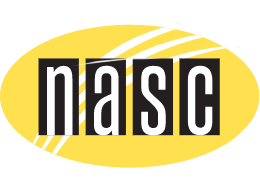Dogs can have itchy red skin for many reasons, and one disturbing diagnosis you might have to face is mange. But there are several things you can do to manage mange in dogs naturally. It’ll be challenging and take some time …but it’ll also improve your dog’s long-term health.
What Is Mange In Dogs?
Demodectic and sarcoptic mange are the 2 most common types of mange in dogs, and both are caused by mites. Mites are parasites … meaning mange is a parasitic skin disease. Young dogs with immature immune systems are more prone to mange.
Demodectic Mange
Demodectic mange is also known as demodex or red mange. It’s common as part of the natural skin flora of your dog … and it’s usually harmless in healthy dogs. It often occurs in puppies with immature immune systems. Stray, elderly or sick dogs who are immune-compromised are the ones who’ll have trouble with demodex. Hair loss usually starts on the face, around the eyes, and there may not be any itching. Your vet will need to examine deep skin scrapings under a microscope. But since most dogs have some mites, she’ll find out if there are a larger amount of mites than normal.
Sarcoptic Mange
Sarcoptic mange (scabies in humans) is the other common form. It’s very contagious and can spread to people as well as other pets. Mites reproduce and multiply quickly on the skin surface. But the life cycle only continues on animals. A 2010 study concluded that young dogs are more susceptible to sarcoptic mange, suggesting older dogs have better immunity (1). Your vet will take skin scrapings to confirm the presence of these microscopic mites.
Symptoms and treatment for both types are very similar. It’s the specific mite that causes each type of mange that makes the difference.
Signs Of Mange In Dogs
Mites in both types of mange create an irritation in your dog that leads to severe itching. You’ll find mites in hairless areas such as the inside of ears, armpits and belly. These are some other signs:
- Extreme itchiness, intense scratching and flaky skin.
- Skin rashes.
- Skin will be red and inflamed.
- Bumps as the mites burrow under the skin.
- Patches of hair loss through chewing and scratching.
- Scabs and crustiness.
- Open sores and secondary skin infections.
- Possible swollen lymph nodes.
These are other things you might notice.
- Allergy treatments for skin issues don’t work.
- Small bites or track marks appear when it’s sarcoptic mange.
- A yeasty smell, blackheads or an acne-like rash, when it’s demodectic mange.
And if other dogs begin itching or you notice a purplish rash on yourself or others, you could be dealing with mange.
If you’ve confirmed your dog has mange, here are some steps you can take.
7 Steps To Manage Mange
When you use natural remedies to fight mange, you need to be consistent and diligent to achieve success. And other dogs in your home should be treated as well to limit the spread.
Here are things you can do to manage mange.
1. Choose Shampoos With Safe Ingredients
You need to use a natural shampoo without toxic ingredients to bathe your dog. Commercial and medicated shampoos are too harsh and can irritate your dog’s raw skin.
Dogs with sarcoptic mange will need bathing once a week for about 3 weeks. You need to maintain a clean and mite-free environment so mites don’t transfer back to your dog after bathing. Canine Herbalist Rita Hogan recommends neem shampoos for dogs with sarcoptic mange.
2. Include Herb And Oil Blends
You’ll find antiparasitic remedies and recipes here that can help fight sarcoptic mange, also recommended by Rita Hogan. Follow the recipe amounts and don’t use undiluted essential oils on your dog’s skin.
They include:
- Barbados Nut Oil (Jatropha cruces). It’s insecticidal, antiparasitic and antifungal.
- Neem Oil with Palmarosa and Geranium Essential Oil Blend. This is a combination that’s antiparasitic, bacterial and antifungal.
- Turmeric And Neem Oil Infusion
Caution: You should always avoid using tea tree or clove oil as these are toxic to dogs.
3. Use A Natural Mange Treatment
There are chemical-free products that fight both types of mange. One of these is Mite Avenge, with ingredients that include essential oils, styrax benzoin (a bark resin used for skin ulcers), and vitamin E, sea kelp. The company provides detailed instructions on how to use the product for both types of mange.
4. Use Quercetin
Mange creates inflammation within your dog’s skin. Quercetin is found in many fruits and vegetables. It has anti-inflammatory and anti-histamine properties that lower inflammation … and that reduces itching (2). And quercetin doesn’t have the damaging side effects of pharmaceutical anti-inflammatories.
5. Use Natural Antibiotics For Secondary Infection
Often mange will create a secondary bacterial infection. Antibiotics will destroy bacteria … not just bad bacteria but also the beneficial bacteria you’ve been trying to build in your dog’s microbiome. Instead, there are many natural antibiotics, supported by scientific studies (3, 4, 5, 6), that can fight the bacteria that lead to infection and disease.
6. Improve The Immune System
A weakened immune system is all it takes for parasites like mites to infest your dog. You can improve it by adding these things to your dog’s diet:
Probiotics
Probiotics are becoming the first line of defense against infection by supporting the immune system with beneficial bacteria (7). That reduces inflammation that can create leaky gut (8) and lead to more serious issues … and allow parasites like mites to take hold. Use a product for dogs and dose according to the label.
Medicinal Mushrooms
A combination of several types of mushrooms will give your dog multiple benefits in addition to enhancing immunity. Helpful species include reishi (9, 10), maitake (11), turkey tail (12), chaga, shiitake, cordyceps, and phellinus. Medicinal mushrooms will have dosing instructions on their labels.
Colostrum
Bovine colostrum (13) has concentrated immune factors that help fight against viruses, bacteria, yeast and fungi. Follow label instructions to obtain dosing information for your dog.
Echinacea
Echinacea (14) is a herb that activates macrophages which are immune cells that battle infection. It also boosts T-cell production and that helps immune cells move to the infection. But echinacea really depends on a healthy immune system to boost your dog’s ability to fight disease before it happens.
Echinacea has natural antibiotic, antiviral and antifungal properties. It’s most effective if you give it to your dog before he plays with new dogs, ahead of stressful events or before he needs to be boarded. That way if he meets a dog with mange, his immune system has been given an extra boost.
Try to find a tincture with both types of echinacea … echinacea purpurea and angustifolia to get the benefit of their complementary properties. You can give 12 to 25 drops of echinacea tincture, three times a day, depending on your dog’s size.
Caution: Many herbalists advise not using echinacea full time. It’s more effective used only when needed for an extra immune boost. Herbalists Greg Tilford and Mary Wulff recommend five days on and two to three days off.
7. Feed A Healthy Diet
A whole-food, raw meat diet supports your dog’s gut bacteria … as well as the balance of beneficial bacteria of his skin microbiome. As mentioned earlier, include prebiotics and probiotics to support your dog’s gut health.
And while you’re getting your dog’s case of mange under control, you need to minimize the spread and re-contamination in your home.
Stop The Spread Of Mange At Home
If you’re dealing with sarcoptic mange, you need to start by isolating your dog. It’s ideal if you’ve got a “clean” room. Then he’s kept away from furniture and other pets.
- Wash all his bedding, towels and your own clothes with Borax, and use the highest temperature settings possible. Bag and throw out anything you can’t clean properly.
- Put your dog’s toys and bowls through the dishwasher on high settings.
- Vacuum or steam floors, rugs, upholstery with Borax. If using a bagless machine, add salt to the collection cup to shred mites. Empty and wash it outside.
- Spread diatomaceous earth in vehicles, kennels, rugs, furniture, floors and baseboards, where mites can live. It dehydrates the exoskeletons of parasites like mites and kills them.
- Bag items you can’t clean and store for several weeks until mites die off.
When you follow a course of natural remedies, it will take a few weeks to see improvement. You’ll see success when your dog’s skin begins to heal and his fur starts to grow back. And as well as eliminating mange, you’ll have improved his immune system which is the foundation of a future of good health.
References
1. Feather, L, et al. A retrospective investigation into risk factors of sarcoptic mange in dogs. Parasitol Res. 107, 279–283 (2010).
2. Li Y, et al. Quercetin, Inflammation and Immunity. Nutrients. 2016; 8(3):167.
3. Feng J, et al. Selective Essential Oils from Spice or Culinary Herbs Have High Activity against Stationary Phase and Biofilm Borrelia burgdorferi. Front Med (Lausanne). 2017 Oct 11;4:169.
4. Memar, MY, et al. Carvacrol and thymol: strong antimicrobial agents against resistant isolates. Reviews in Medical Microbiology. 2017. Vol. 28, Issue 2. P 63-68.
5. Petrovska BB, Cekovska S. Extracts from the history and medical properties of garlic. Pharmacogn Rev. 2010 Jan;4(7):106-10.
6. Omar SH. Oleuropein in olive and its pharmacological effects. Sci Pharm. 2010 Apr-Jun;78(2):133-54.
7. Baillon ML, et al. Effects of probiotic Lactobacillus acidophilus strain DSM13241 in healthy adult dogs. Am J Vet Res. 2004 Mar; 65(3): 338-43.
8. Fernandez, L, et al. Characterization of Lactobacillus rhamnosus MP01 and Lactobacillus Plantarum MP02 and Assessment of Their Potential for the Prevention of Gastrointestinal Infections in an Experimental Canine Model. Front. Microbiol. 24 May 2019.
9. Sohretoglu D, Huang S. Ganoderma lucidum Polysaccharides as An Anti-cancer Agent. Anticancer Agents Med Chem. 2018;18(5):667-674.
10. Cao QZ. Antitumor and anti-angiogenic activity of Ganoderma lucidum polysaccharides peptide. Acta Pharmacologica Sinica. Jun 2004, 25(6):833-838.
11. Konno, Sasuke. Potential growth inhibitory effect of maitake D-fraction on canine cancer cells. Veterinary therapeutics: research in applied veterinary medicine. 2004: 263-71.
12. Brown DC, Reetz J. Single-agent polysaccharopeptide delays metastases and improves survival in naturally occurring hemangiosarcoma. Evid Based Complement Alternat Med. 2012; 2012:384301.
13. McGrath, B.A., et al. Composition and properties of bovine colostrum: a review. Dairy Sci. & Technol. 96, 133–158 (2016).
14. Miller, Sandra C. Echinacea: a Miracle Herb against Aging and Cancer? Evidence In vivo in Mice. Evid Based Complement Alternat Med. 2005 Sep; 2(3): 309–314.





